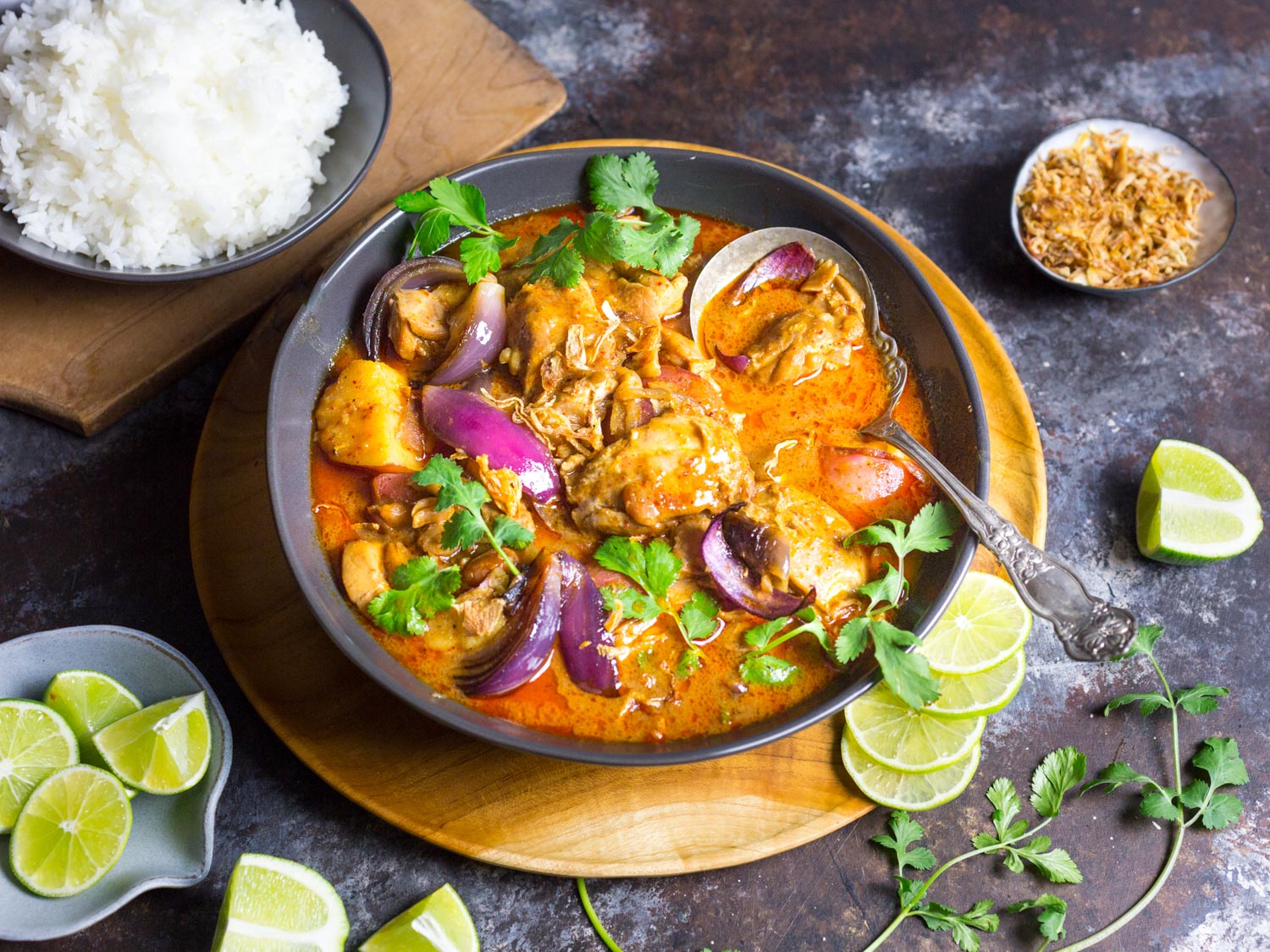- Select a flat bottomed wok, if you plan to cook using an electric stove. You can also use the flat bottomed wok over a gas flame.

- Select the traditional round bottomed wok, if you plan to cook over a gas flame. You will need to purchase a wok ring to use the wok over a gas flame. Cooking with a wok is usually more successful using gas as you have better control over the heat setting.

Cast-iron wok, 1960’s. A hammered circular iron wok, while simple in design, becomes an instrument of varied utility in the hands of an accomplished cook as oil, water, and fire are coordinated in the preparation of vegetables, meats, and fish. - Season the wok much like you would a cast iron skillet. Clean the wok, make sure to remove all the protective coating when cleaning the wok, and then apply shortening to the wok. Heat to season the greased wok. Natural seasoning will occur with use after the wok has been initially seasoned.
- Braising: Braise foods by adding a small amount of liquid. Woks can be used to braise foods. Food is fried briefly before a small amount of liquid is added to the wok. The food is then covered and cooked over low heat until tender. The food can also be braised with the lid off leading to concentrated flavors as the moisture evaporates.
- Steaming: Insert a sieve or steamer basket that fits the wok. Add the food to the basket. Pour just enough liquid so that it is underneath the basket but does not cover the food. Cover and steam food until done. Add additional liquid during cooking to keep up the steam. This is a low calorie way to prepare food in a wok.

- Deep Fat Frying: Add enough oil to allow for deep fat frying. Make sure to not overfill the wok to prevent the oil from “boiling” over and ending up on you. Heat the oil and then add the food. Be careful when deep fat frying as this can be dangerous.
- Stir Frying: Cut food into even sizes before heating a small amount of oil in the wok. Add the cut-up food and quickly stir until the food is cooked to desired doneness.
Chicken Massaman
Source:
http://www.seriouseats.com/2017/04/how-to-make-chicken-massaman-curry.html
Curry without the Heat
INGREDIENTS
- 1 tablespoon (15ml) vegetable oil
- 2 medium red onions (about 3/4 pound), cut pole to pole into 8 wedges each
- 8 ounces massaman curry paste (about 1/2 cup; 300g)
- 1 (12-ounce; 355ml) bottle Belgian-style wheat beer
- 1 (14-ounce) can unsweetened coconut milk
- 3/4 cup (175ml) homemade chicken stock or store-bought low-sodium chicken stock
- 3 tablespoons (45ml) Asian fish sauce
- 2 1/2 tablespoons (30g) palm or light brown sugar
- 2 star anise pods
- 1 cinnamon stick
- 8 to 10 boneless, skinless chicken thighs (about 3 pounds; 1.5kg), cut into large pieces
- 1 1/2 pounds (700g) red or Yukon Gold potatoes, cut into large chunks
- 1/2 cup (75g) roasted unsalted peanuts
- 3 tablespoons (45ml) fresh juice from about 2 limes, plus lime wedges for garnish
- Kosher salt, to taste
- Steamed or boiled rice, for serving
- 1 cup (30g) lightly packed cilantro leaves and tender stems, for garnish
- Fried shallots, for garnish (optional)
DIRECTIONS
-
In a Dutch oven, heat oil over medium-high heat until shimmering. Add onions and cook, stirring occasionally, until softened slightly and golden brown in spots, about 5 minutes. Transfer to a plate.
-
Add curry paste and cook, stirring, for 2 minutes. Stir in beer and bring to a boil, then reduce to a simmer. Cook until reduced by half, about 5 minutes. Add coconut milk, chicken stock, fish sauce, sugar, star anise, cinnamon stick, chicken, and potatoes. Bring to a boil, reduce heat to low, cover, and simmer for 20 minutes.
-
Add onions back to pot and continue simmering, uncovered, until potatoes are tender and chicken is cooked through, 15 to 20 minutes longer. Remove from heat. Discard star anise pods and cinnamon stick. Spoon off any excess fat on the surface, if necessary. Stir in peanuts and lime juice and season to taste with salt, if needed.
-
Serve with rice, garnishing with cilantro, lime wedges, and fried shallots (if using).


